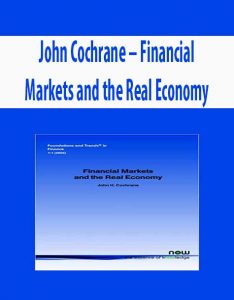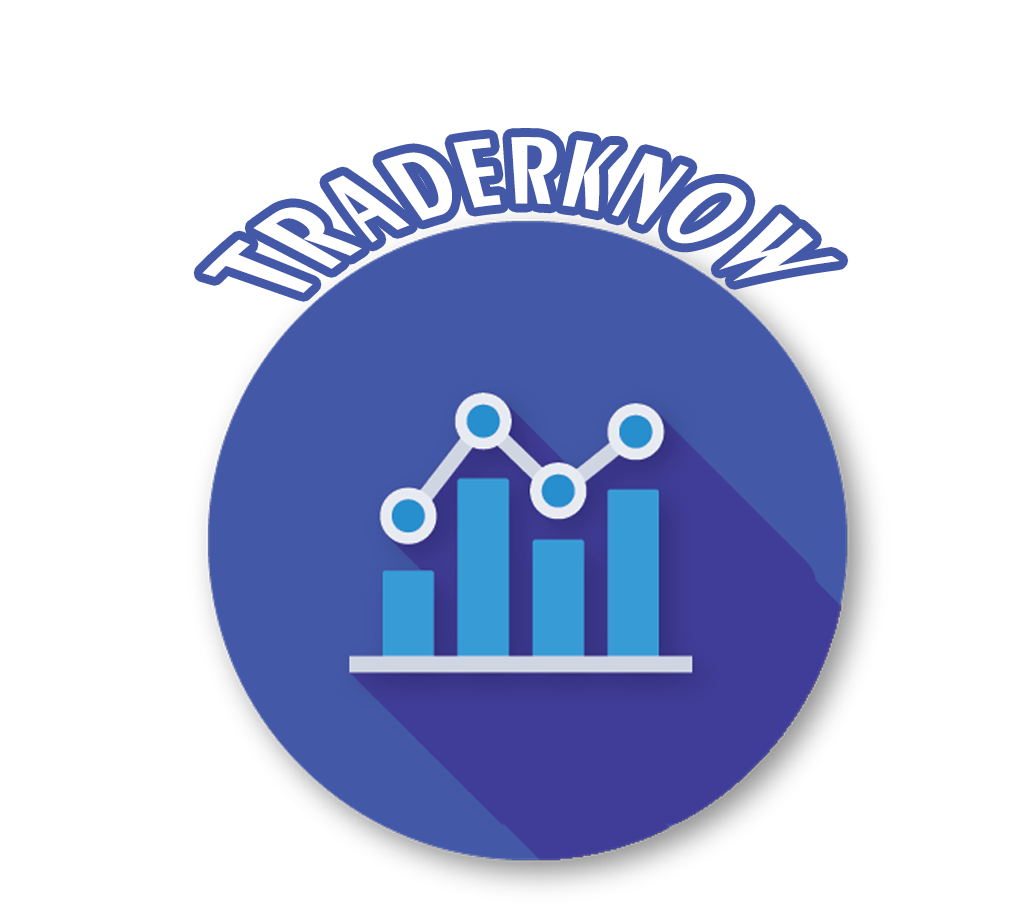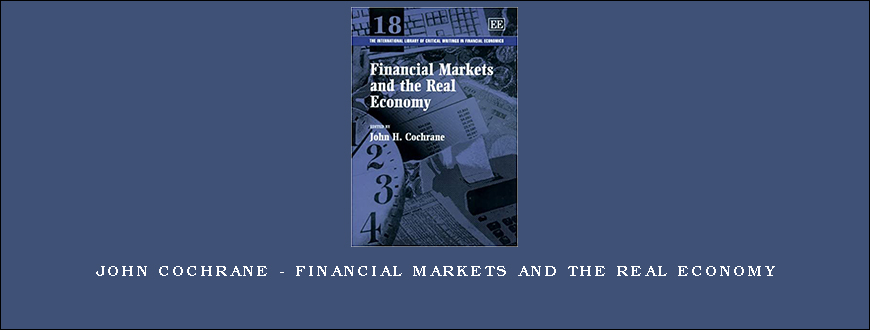
John Cochrane – Financial Markets and the Real Economy
Examines the intersection between macroeconomics and finance. The key challenge in this area is to find the right measure of ‘bad times’ (the marginal value of wealth) to explain some assets’ high average returns or low prices as compensation for those assets’ tendency to pay off poorly in bad times.
FINANCIAL MARKETS AND THE REAL ECONOMY
Edited by John H. Cochrane, Myron S. Scholes Professor of Finance, University of Chicago Graduate School of Business, US
This insightful collection examines the intersection between macroeconomics and finance. The key challenge in this area is to find the right measure of ‘bad times’ (the marginal value of wealth) to explain some assets’ high average returns or low prices as compensation for those assets’ tendency to pay off poorly in bad times.
What are the real, macroeconomic risks that drive asset prices? This question is centrally important to macroeconomics. Where better to learn about the risks of recessions and depressions than by understanding the prices of assets such as stocks that carry macroeconomic risks? The question is also at the core of finance. For example, finance has long wondered if asset prices are “rational” or not.
Also Get John Cochrane – Financial Markets and the Real Economy on Traderknow.com
The only meaning of that term is whether asset prices are properly connected to macroeconomic risks. Financial Markets and the Real Economy reviews the current academic literature on the macroeconomics of finance. It starts by collecting the important facts such as the equity premium, size and value effects, and the predictability of returns. It then reviews the equity premium puzzle, which is the most basic challenge to the connection between asset prices and macroeconomics.
Next, it surveys the current state of consumption-based models, and some of their surprising recent successes. It covers production and general-equilibrium models that tie asset returns to more cyclically important output and investment. Finally, it surveys the potential importance of labor income and idiosyncratic risk in understanding asset markets.
This is the most current and comprehensive review on the subject and will be of interest to both macroeconomists and financial economists. 1. Introduction; 2. Facts: Time-Variation and Business Cycle Correlation of Expected Returns; 3. Equity Premium; 4. Consumption Models; 5. Production, Investment and General Equilibrium; 6. Labor Income and Idiosyncratic Risk; 7. Challenges for the Future; References
Also Get John Cochrane – Financial Markets and the Real Economy on Traderknow.com
Visit more course: BOND – STOCK TRADING
Some BOND – STOCK course: Djellala – Training by Ebooks (PDF Files), Also StratagemTrade – Rolling Thunder: The Ultimate Hedging Technique. Also Tom K. eloyd – Successful Stock Signals for Traders and Portfolio Managers: Integrating. Also Daniel T.Ferrera Llewelyn James Martin Armstrong investorsunderground
Visit more course: FOREX TRADING COURSE
Some FX course: Bill Williams Eduard Altmann SMB Simpler Trading Van Tharp Atlas Api Training Trading Template Sunil Mangwani Sunil Mangwani Frank Paul . Also Market Delta Tradingacademy Simplertrading Urbanforex. Also Candlechartscom Dan Sheridan Pipsociety Atlas Api Training TopTradeTools Todd Mitchell Jerry Singh OpenTrader Alexandertrading Daytradingzones . wyckoffanalytics Simplertrading
Available at traderknow.com
Please contact email: [email protected] If you have any question.
Course Features
- Lectures 0
- Quizzes 0
- Duration 50 hours
- Skill level All levels
- Language English
- Students 66
- Assessments Yes


